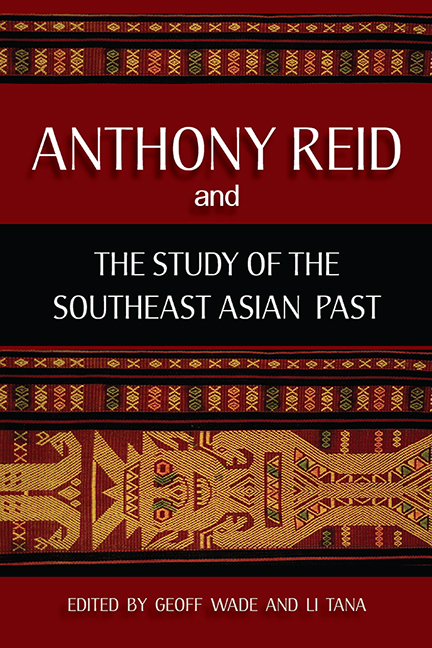Book contents
- Frontmatter
- Contents
- Acknowledgements
- The Contributors
- PART I Introduction
- PART II The Scholarship of Anthony Reid
- PART III Southeast Asia in the World
- PART IV Early Modern Southeast Asia
- 7 Southeast Asian Islam and Southern China in the Fourteenth Century
- 8 Lancaran, Ghurab and Ghali: Mediterranean Impact on War Vessels in Early Modern Southeast Asia
- 9 Weather, History and Empire: The Typhoon Factor and the Manila Galleon Trade, 1565–1815
- 10 Interracial Marriages and the Overseas Family: The Case of the Portuguese Topasses in Timor
- 11 A Note on the Čhām Diaspora in the Ayutthayan Kingdom
- 12 Tongking in the Age of Commerce
- PART V Modern Southeast Asia
- Appendix
- Index
- Plate section
12 - Tongking in the Age of Commerce
from PART IV - Early Modern Southeast Asia
Published online by Cambridge University Press: 21 October 2015
- Frontmatter
- Contents
- Acknowledgements
- The Contributors
- PART I Introduction
- PART II The Scholarship of Anthony Reid
- PART III Southeast Asia in the World
- PART IV Early Modern Southeast Asia
- 7 Southeast Asian Islam and Southern China in the Fourteenth Century
- 8 Lancaran, Ghurab and Ghali: Mediterranean Impact on War Vessels in Early Modern Southeast Asia
- 9 Weather, History and Empire: The Typhoon Factor and the Manila Galleon Trade, 1565–1815
- 10 Interracial Marriages and the Overseas Family: The Case of the Portuguese Topasses in Timor
- 11 A Note on the Čhām Diaspora in the Ayutthayan Kingdom
- 12 Tongking in the Age of Commerce
- PART V Modern Southeast Asia
- Appendix
- Index
- Plate section
Summary
Studies on the premodern history of Vietnam owe much to Tony Reid, whose concept of the “Age of Commerce” has enlightened and inspired a generation of younger scholars. The “traditional” Vietnam had hitherto been portrayed as an undifferentiated swamp of peasantry living in closed and identical villages — “the Vietnamese village” — which stretched from north to south and throughout the centuries. Reid's representation of premodern Southeast Asia in relation to the rest of the world re-shaped the study of Southeast Asia and threw powerful new light onto facets of Vietnamese history and society which had previously not been properly investigated. For the first time, commerce was seen as an index of power and prosperity in premodern Vietnam like in its other Southeast Asian counterparts. If, over the last twenty years, scholars on Vietnam have more or less demolished the image of “a united Vietnam, a village Vietnam, a Confucian Vietnam, and a revolutionary Vietnam”, this owes much to Reid for providing powerful weapons and frameworks within which new ground could be opened.
Over the last 10 years, our knowledge of seventeenth century northern Vietnam (Tongking, or Dang Ngoai) has grown remarkably. In a way this is indicative and a result of the acceleration of researches on Vietnamese history over this period. Scholars in Vietnam, sometimes in collaboration with foreign scholars, have also contributed important work to the field, and much of this is based on stele inscriptions collected from northern and central Vietnam. This article will build on these new findings and explore the relations between Tongking's overseas trade and social changes, particularly the cultural and religious changes in seventeenth century Tongking society.
The size of seventeenth century Tongking's overseas revenue
The role of commerce in changing societies has been recognized almost everywhere in Asia, but Tongking until recently retained the image of being comprised of classic autonomous villages, with deeply-rooted Confucian values and centred of an agricultural economy. If there was any sign of significant commercial growth here, it was but a “capitalist sprout,” incidentally grown out of the soil of a typical subsistence economy.
- Type
- Chapter
- Information
- Anthony Reid and the Study of the Southeast Asian Past , pp. 246 - 268Publisher: ISEAS–Yusof Ishak InstitutePrint publication year: 2012

